As responsible travelers evolve, so do the stories we share.
This article is part of our living archive — trusted content we continue to care for.
First published on April 4, 2024 • Last updated on April 4, 2024.
UPDATED: Mashpi Amagusa Is Safe and Sound!
It is more than time to update this post we originally published in July 2023. Thanks to many generous donors via a successful GoFundMe campaign and the new partnership between Mashpi Amagusa and Conserva Aves, Sergio and Doris are in the process of purchasing all of the property mentioned in the original article below.
Eventually, about half of that land will be placed in the stewardship of a non-profit foundation that that Sergio and Doris are in process of creating in partnership with other local business owners.
In the meantime, the money donated by Conserva Aves, facilitated by the excellent team at the American Bird Conservancy, also paid for a new website. Sergio and Doris asked my consulting company to design, host, and manage the page. Please be sure to check it out: https://mashpi-amagusa.com.
We will continue to maintain the original article below so that people can see an important part of the history we helped shape. Enjoy learning more about the Mashpi Amagusa Reserve:
Will the long-term stewards of Mashpi Amagusa lose their land?
Deep in the heart of the Choco-Andino Biosphere lies a 62-hectare plot of primary forest lush with flora and fauna, including 10 aquifers that feed the Mashpi River and 24 species of endemic birds. While the land has been used for the past decade by the Mashpi-Amagusa Reserve, its stewards, Sergio Basantes and Doris Villalba, will lose the land if they can’t raise enough funds to buy it from its current owners.
The Opportunity: The owner of the current property, La Y de Esperanza, wants to sell 62 hectares of primary forest. They have given the Basantes family the first option to buy.
The Problem: The Basantes family does not have access to the needed $80,000. Loans in Ecuador can include interest rates as high as 20%, making them unaffordable for small business owners like Sergio. Land ownership is key to securing the future of this sacred primary forest.
The Solution: A fundraising campaign to help the Basantes family become owners of the property that they have protected for the past decade.
UPDATE: We have enough money for the Basantes-Villalba family to sign a contract with La Y de Esperanza. In fact, we have raised one half of the total amount required to buy the land. We have a few more weeks to raise $40,000 more and complete the purchase towards the end of September.
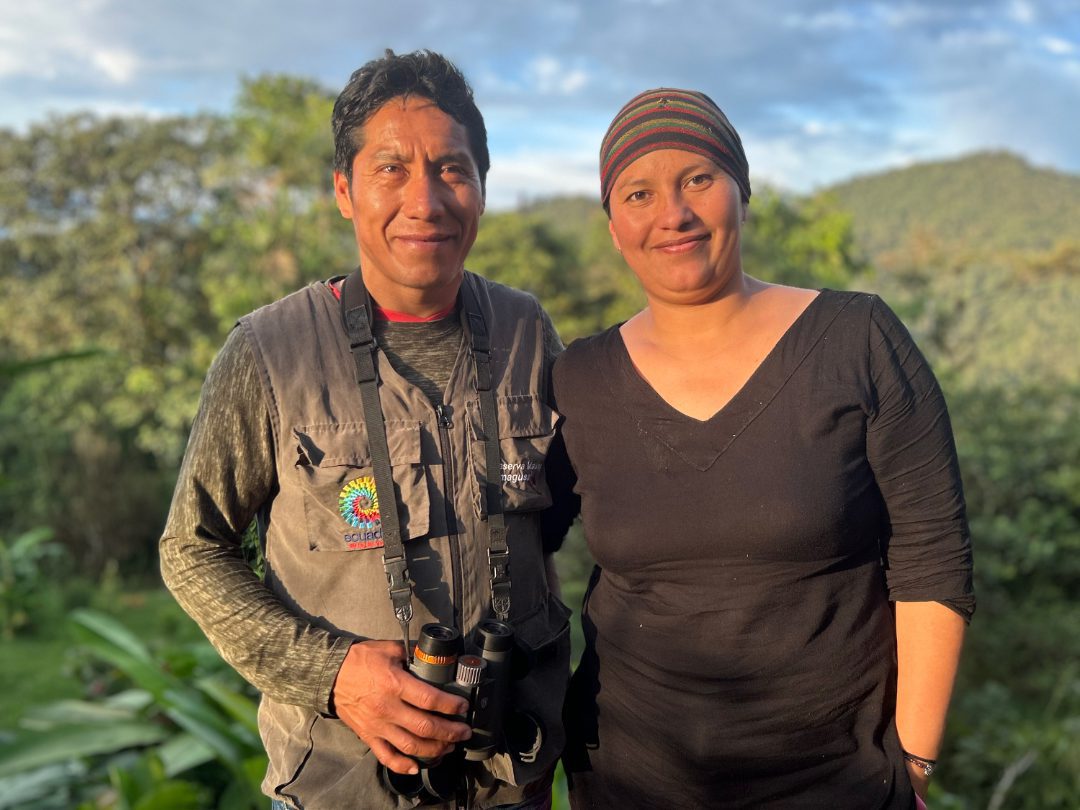
About Mashpi Amagusa
Founded in 2012, the Amagusa Reserve, as it is sometimes called, started with little more than a simple blind for birdwatchers to admire species that would come to a few feeders and to spot more elusive birds camouflaged in the trees or hidden on the forest floor. If you wanted to stay the night, you were more than welcome to set up a tent.
At Mashpi Amagusa, the land is steep. Each elevation change creates a unique microclimate for different kinds of flora and fauna, including birds. That is, in part, why it is possible to find a large concentration of Chocó endemic species on this land.

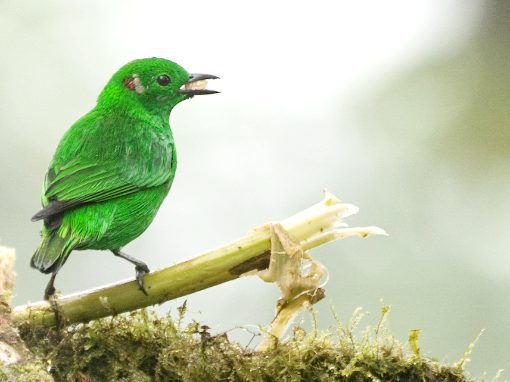
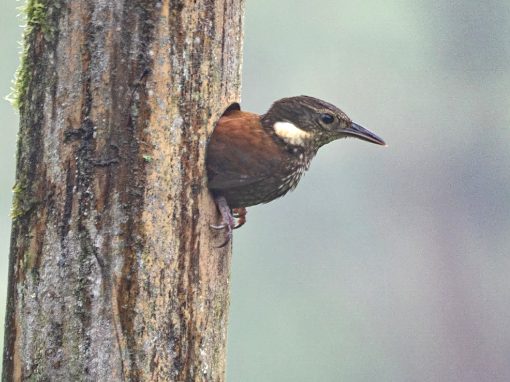
When the reserve first opened, only the most dedicated birdwatchers visited. But as word got out, more and more tourists came. Some wanted to enjoy the myriad of hummingbirds that visit the garden. Others were intrigued by the Glistening-Green Tanager. Still more came to add to their life list of birds – after all, if you know your birds, it is not unusual to see 60-80 species in a single day. This past March, Ecuadorian bird guide Nelson Apolo submitted a list to eBird of 107 species observed in 8 hours and 25 minutes!
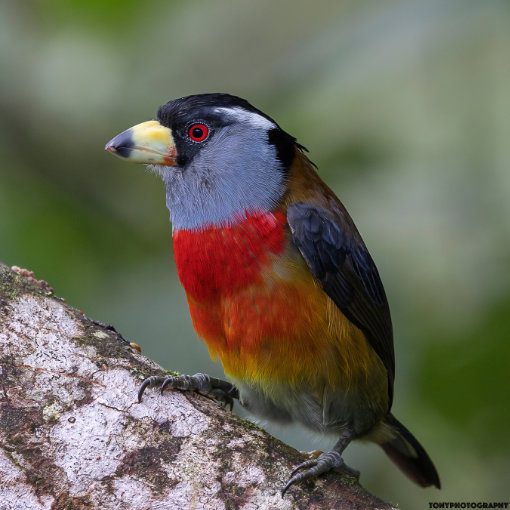
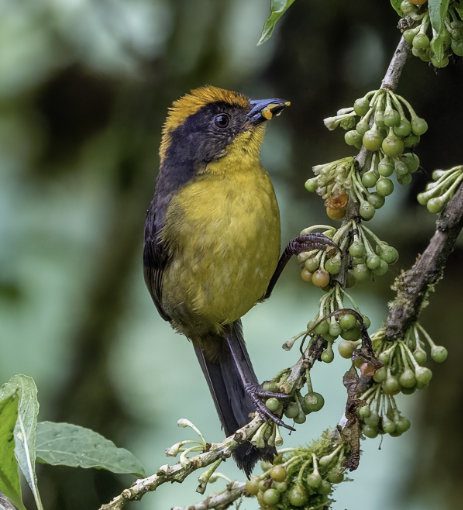

Today, all kinds of visitors arrive: dedicated birdwatchers, budding enthusiasts, naturalists, research scientists, tourists staying at Mashpi Lodge, day-trippers from Mindo, Ecuadorian families, and more. They come for the birds but they also come to hear Sergio talk about the importance of Mashpi Amagusa and eat the delicious, home-cooked meals that Doris prepares daily. Visitors may hike to a waterfall, spend time in the hummingbird garden, or tally their count of birds after a full day of looking through binoculars into the dense, damp forest of trees.
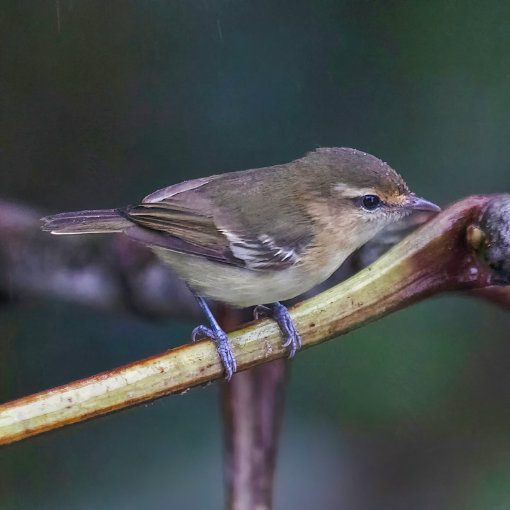

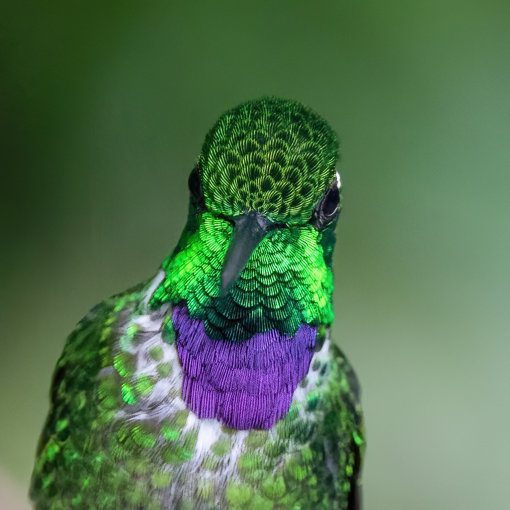
How Sergio Basantes Became a Birdwatcher
Sergio’s parents moved to Pacto, Ecuador in the 1980’s, when Sergio was a boy. He grew up like most people in the community, seeing the forest as a place to hunt, to harvest trees, and maybe to play… especially when there was a great pool of water and a rushing cascade nearby.
The small town of Amagusa was a 4-5 hour walk away from their property. That left little opportunity for going to school. So Sergio grew up on the family farm and left at the first opportunity to make money in the big city of Quito. It wasn’t until 2008 when a crazy thing happened that encouraged Sergio back home.
Roque Sevilla, a former mayor of Ecuador, decided to build an eco-lodge on land he had purchased a decade before immediately next to the land where Sergio’s father lived. People in the community thought Sevilla was crazy. Who would come visit this perpetually foggy, damp, and humid place in the middle of the forest?
That didn’t stop Sevilla from building. He hired workers from the local community, including Sergio.
After the construction was finished, Sergio stayed on to help clear trails and slowly but surely learned how to identify the birds as well. He fell in love with nature.
Mashpi Lodge eventually hired him as a local guide. Yes, Sevilla’s crazy project is the award-winning ecolodge that partners with National Geographic, providing naturalists an opportunity to stay in luxury in the heart of the tropical, mossy, rainforests of the IBA Mashpi-Pachijal.
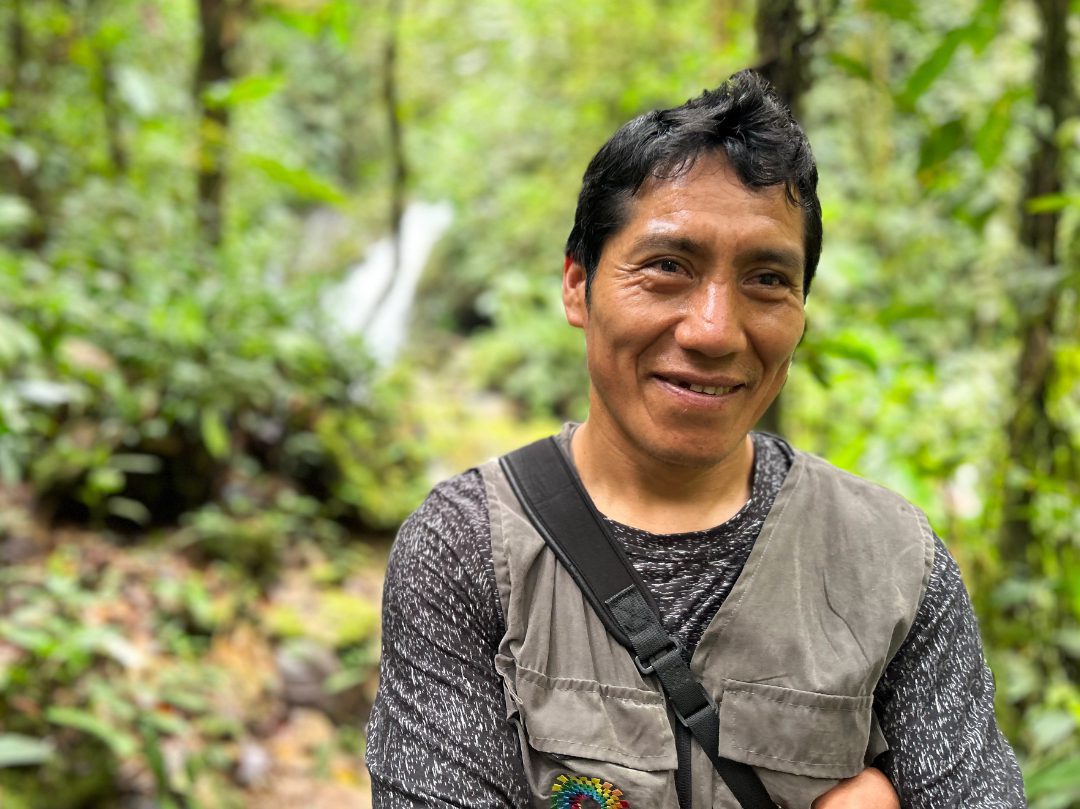
Meeting Doris
When Sergio was in Quito, long before he returned to help build Mashpi, he was lucky enough to meet Doris Villalba. She comes from Nono, a small town outside Quito. In fact, she lived outside of Nono, on the slopes of the Pichincha Volcano just below the Yanacocha Reserve. Growing up along the famous Hummingbird Route meant that Doris was aware of birds and birdwatching. She had seen the postive impact tourism had on her own community.
When Sergio wanted to move back home, she was unsure. Yet she and the children arrived and they set up home in Pacto Loma. They struggled at first. It was warm and wet all of the time and they were used to the cold and dry climate of a higher altitude.
After starting the eco-tourism project on a portion of his father’s land, Sergio would bring his family out for the weekends. There were snakes. Doris hated the snakes. The children complained about the mud and the mosquitos. The place was denuded of trees because it was cattle pasture all around. At first, it was hard to see the potential.
Together, she and Sergio began the hard work of reclaiming the pasture. She planted everything she could find only to watch it die. Every misstep was an opportunity to learn something new. It was only when she learned to plant native species that trees and bushes began grow.
Once they built a home, it became easier. There was still mud and mosquitos, but there was a place to stay. They were close enough to the road to make it easy for the children to go to school. And she and Sergio could dedicate more time to making eco-tourism work.
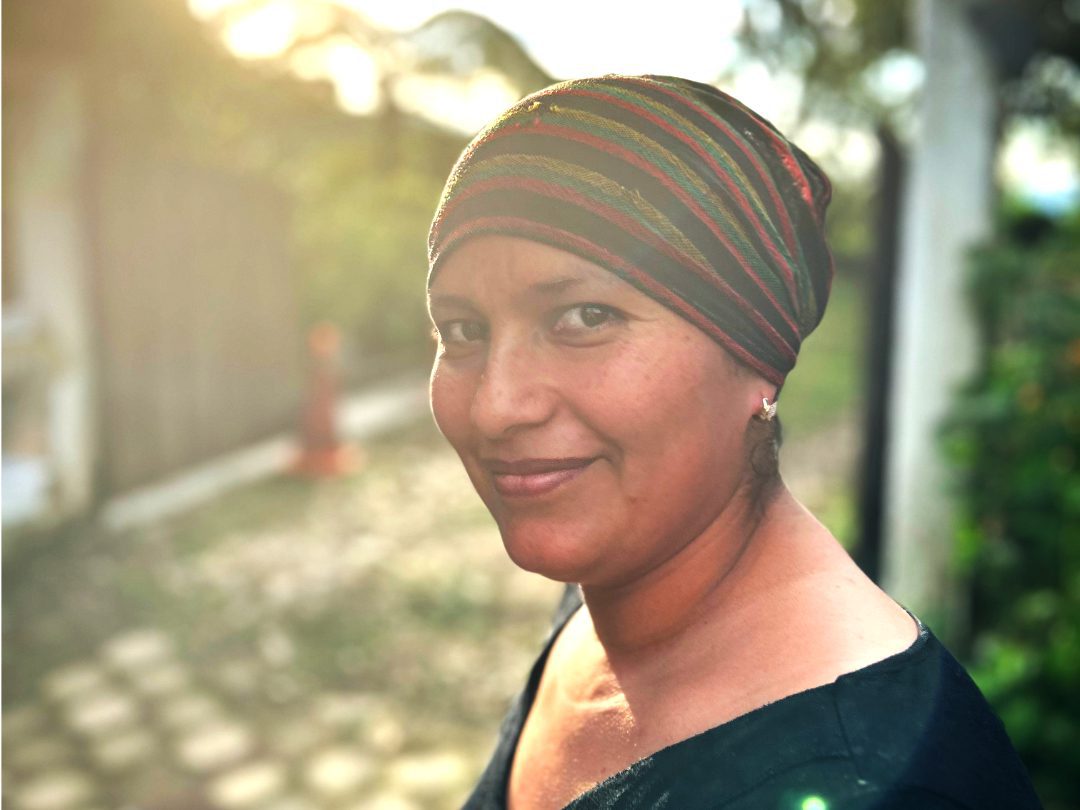
Today at the Mashpi Amagusa Reserve
When you arrive at the Reserve today, it looks very different from a decade ago. First, it’s hard to tell that it was cattle pasture. The secondary forest has rebounded, helping to protect the primary forest just beyond its borders. Doris’s hardwork has paid off.
You might see other family members helping with the many guests who visit from afar. Their children, Alexis, Estif, and Sergio Josefa are all involved in different parts of the business when they are not in school. They help in the kitchen, to point out the different hummingbirds that come to the feeders, and even guide guests on the trails, taking them to the waterfall.
Recently, Sergio began to offer courses in birdwatching and identification for local youth, boys and girls, with the idea of training future guides for the region. He knows that to keep people in Pacto, they need to have jobs.
That’s one of the huge positives of working with Sergio. He invests in the local community. He creates partnerships. He supports local businesses. He understands how important it is to create tourism that works for everyone, not just his own family.

Crowdfunding as Proven Model of Success
A little less than a year ago, Refugio Paz de Las Aves, another Ecuadorian eco-tourism project located not far from Mashpi Amagusa, successfully raised $150,000 with the help of birdwatchers and nature lovers worldwide. It was proof that crowdfunding can work in the ecotourism world.
So many of you reading this will have visited the Mashpi-Amagusa Reserve. You know Sergio and his wife, Doris. You understand how well prepared they are to be the owners of this land. In fact, you most likely thought they already were.
If you haven’t visited the reserve nor met this amazing couple, a few words from Juan Freile, co-author of Birds of Ecuador will explain how so many of us feel about the place and the people who run it:
“Birding is always superb in Mashpi-Amagusa, even on a ‘bad’ day. Many Choco endemics concur at the reserve and several others occur within a few minutes down slope, including birding jewels like Indigo Flowerpiercer, Moss-backed and Glistening-green Tanagers, Black and Rufous-brown Solitaire, Rose-faced Parrot, Blue-fronted Parrotlet, Pacific Tuftedcheek, Esmeraldas Antbird, Scaled and Orange-breasted Fruiteaters, and many more. Furthermore, Amagusa is currently the best place on earth to see (and indirectly to conserve) the rare Choco Vireo, described as recently as 1996.
Beyond birds and birding, though, I love Amagusa because of Doris and Sergio. They and their sons are simply wonderful. I have met hundreds of birders across Ecuador, lots of them are highly esteemed and respected friends, but Doris and Sergio are sort of special people. Their kindness and generosity are matchless in a country filled with tender and generous people.
— I know all the efforts Doris and Sergio have put to keep their reserve and their ecotourism enterprise alive through the pandemic, through land tenure conflicts with invaders, through economic pitfalls.
— I know how they started with a rustic shelter for birders and how their project is transforming into an example of conservation and sustainability.
— I know how committed they are to share their passion and knowledge with neighbors, to defend their territory (the Andean Choco of Pichincha Province) against the gloomy threat of mining exploitation.
Now they have the opportunity to enlarge the familiar forest preserve by purchasing a neighboring forest and I can only wish them the best because they really deserve it.”
If you would like to read more testimonials about Sergio, Doris, and the Mashpi Amagusa Reserve, visit their GoFundMe page. Read the comments! And then donate. Any amount will be appreciated. After all, crowdfunding is not about how much you can give. It’s about how much we come together to do good things.
Thanks to photographers Santiago Salazar, Antonio Jaramillo, Julie Watson, and Abby Eaton for donating photos to support this fundraising campaign.
Declaration of Transparency
I (Angie Drake) will receive an honorarium for my work on this campaign.
If you would like me to work on your future fundraiser, please reach out!


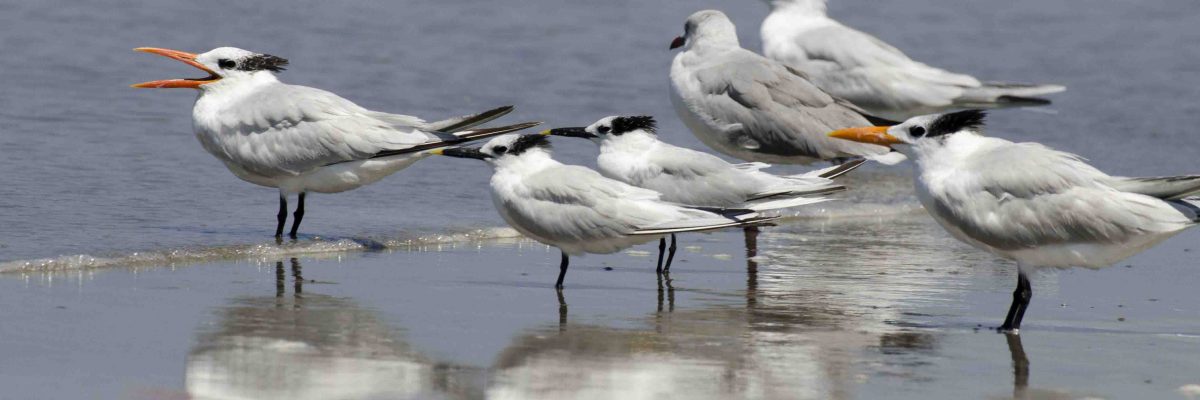
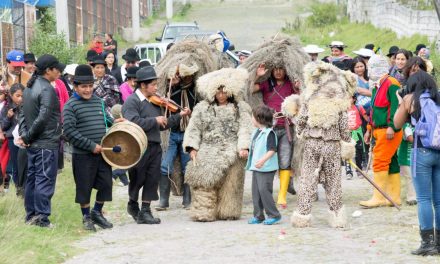
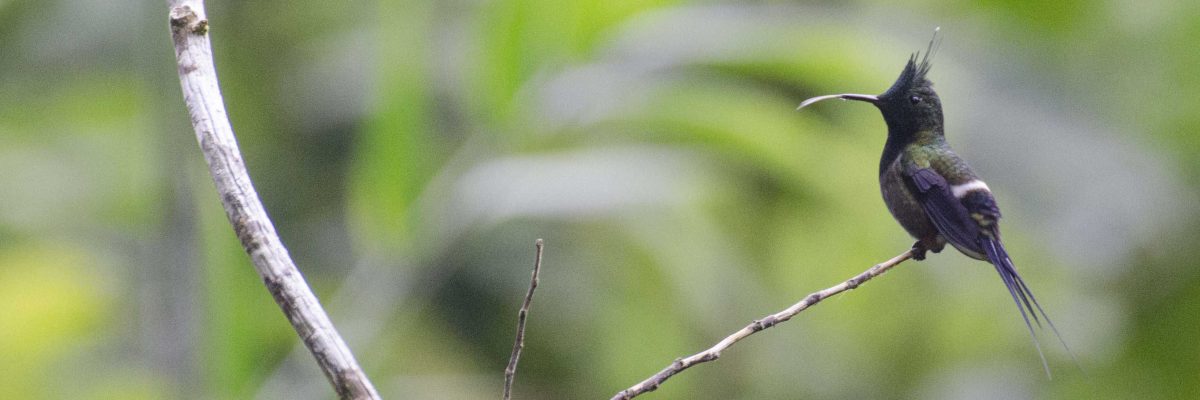


















we are going to visit mashpi amagusa thanks to your recommendation this fall. thank you.
I am so excited for you! My time at Mashpi Amagusa was precious. I am certain you will feel the same after your visit. Feel free to tag us on Facebook or Instagram on any photos you share while on your trip!